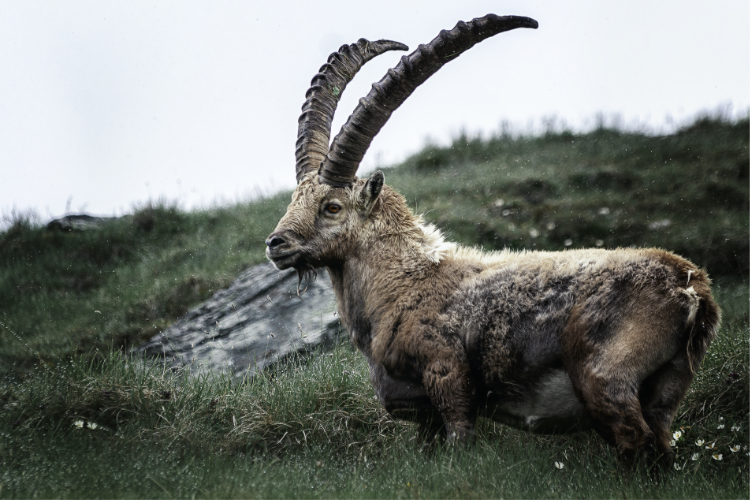
Capricorn - Forst Eibenstein
The ibex, also known as the Alpine ibex, is an impressive animal species native to the high alpine regions of Europe. With its robust body structure and imposing horns, the ibex embodies adaptability and strength in the extreme habitats of the mountains.
The ibex is a relatively large representative of the goat-like and is characterized by its strong appearance. The males, also called bucks, are significantly larger and heavier than the females, called does. An adult male ibex can reach a shoulder height of up to one meter and weigh about 90 to 130 kilograms. Their most striking feature is the imposing, backward curved horns, which are found in both males and females. The horns become more imposing over time and serve the males primarily as a weapon in fights for dominance and mating rights.
The coat color of the ibex varies depending on the season. In summer, the coat is short and reddish-brown, while in winter it takes on a denser, gray-brown coloration. This color change helps them camouflage better in their natural environment. Ibex also have a dense undercoat that protects them from the cold temperatures in high alpine regions.
The ibex inhabits steep and rocky mountainous regions at altitudes of about 1,500 to 3,500 meters. They are excellent climbers and can move effortlessly on rocky terrain. Their special hooves with non-slip pads allow them to stand safely on steep rocks and narrow ledges. These adaptations allow ibex to forage in the inhospitable mountain habitats and avoid predators.
The diet of the ibex consists mainly of grasses, herbs, lichens and low-growing plants found in alpine regions. Due to limited food resources, they often have to travel great distances to find sufficient food. They are also able to go long periods without water, as they can meet most of their water needs by absorbing snow.
Ibex live in small groups called herds. Herds usually consist of a group of females, their young, and a dominant male. Males usually live in small groups or alone, outside the breeding season, and join females only during the mating season.
The ibex has a long reproductive season, which takes place in the fall. W
uring this time, the males fight for dominance by thrusting their imposing horns at each other. After a gestation period of about 5-6 months, the goat gives birth to a single young.
The ibex plays an important role in alpine ecosystems. Through their grazing behavior, they contribute to the regeneration of vegetation and influence plant diversity in mountain regions. They are also a food source for predators such as the golden eagle and the lynx.
The protection of the ibex and its habitat is of great importance, as their populations are threatened by various factors. These include habitat loss from tourism and human development, uncontrolled hunting, and disturbance from climate change. Various conservation measures, such as the establishment of protected areas and sustainable hunting practices, are needed to ensure that the majestic ibex continues to enrich the mountains with its presence in the future.
